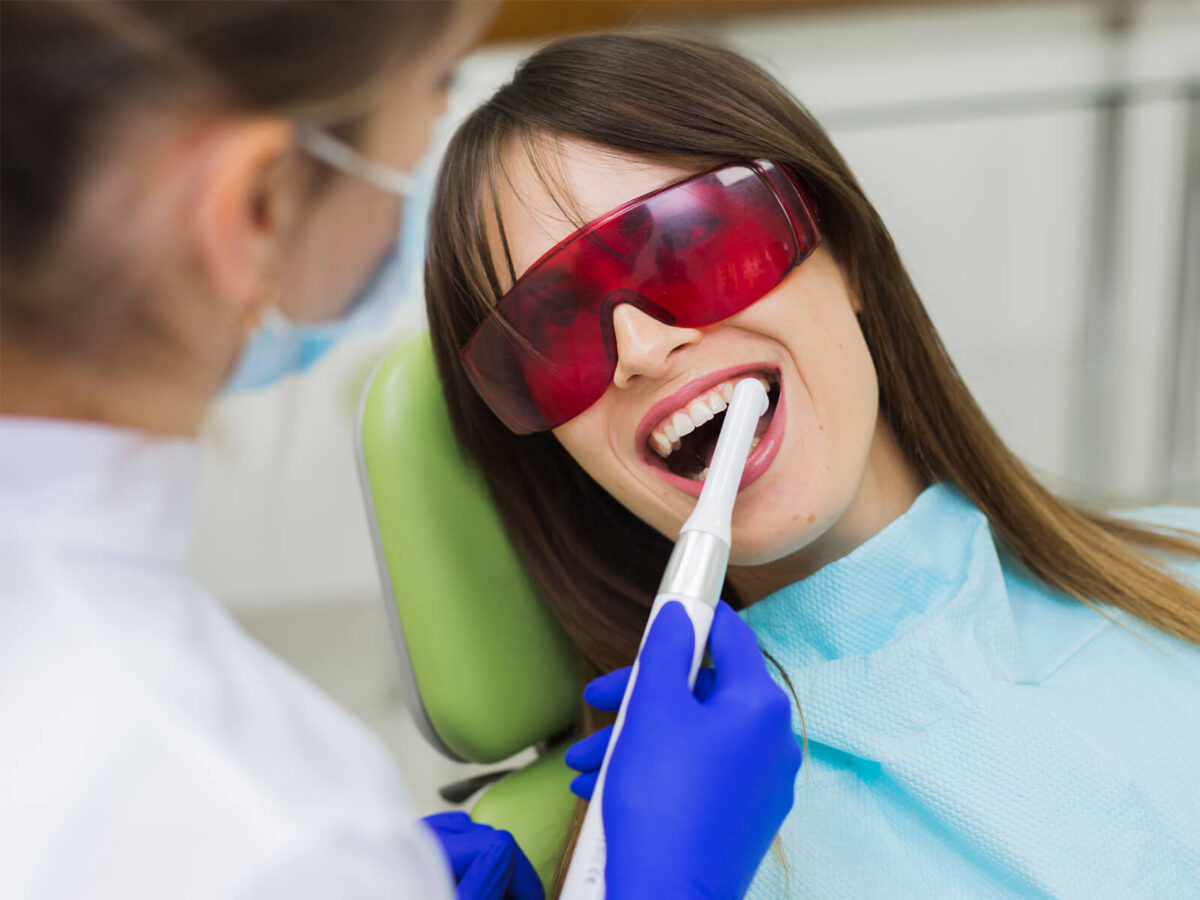River Walk Dental Orthodontics
Blog
Dental hygiene tips for healthy teeth & gums

What Are the Dangers of DIY Teeth Whitening?
Many have turned to do-it-yourself (DIY) teeth whitening methods for a brighter, whiter smile. While the allure of achieving a beautiful smile at home is clear, the risks of DIY teeth whitening should not be underestimated. In this detailed breakdown, we’ll explore the risks and disadvantages of undertaking your teeth whitening, emphasizing the importance of using safe and effective methods to achieve a dazzling smile.
Dangers of DIY Teeth Whitening:
Absence of Professional Supervision:
- Danger: A significant risk of DIY teeth whitening is the lack of professional supervision. Over-the-counter (OTC) whitening solutions and home remedies are not overseen by a dental professional, which can lead to misuse and serious consequences.
- Potential Problems: Overuse of whitening products without professional guidance can cause tooth sensitivity, gum irritation, and enamel damage. Consultation with a dentist provides a tailored approach to teeth whitening, ensuring the best process based on individual needs and oral health.
Unregulated Products:
- Danger: Many DIY teeth whitening products available in stores or online lack the regulatory oversight of those used in dental offices, raising concerns about product safety and effectiveness.
- Potential Problems: Home remedies may contain abrasive or acidic substances that can damage enamel or irritate gums. Over-the-counter treatments might have inconsistent or inaccurate concentrations of whitening agents, leading to unpredictable results and potential harm.
Sensitivity and Irritation of Teeth:
- Risk: Home whitening treatments, especially those with high concentrations of whitening agents, can cause dental sensitivity and discomfort.
- Potential Problems: Harsh chemicals or poorly fitting whitening trays can lead to gum inflammation and discomfort. Enamel damage from abrasive substances in some DIY products can result in increased sensitivity.
Inconsistent Results:
- Risk: DIY teeth whitening often leads to inconsistent results, with some teeth appearing whiter than others. Uneven whitening can detract from the overall appearance of the smile.
- Potential Problems: Inadequate application techniques can result in uneven whitening. DIY treatments may not reach all tooth surfaces, leaving some areas stained.
Risk of Ignoring Significant Issues:
- Risk: Focusing on cosmetic changes rather than potential health concerns, DIY teeth whitening may mask underlying dental issues.
- Potential Problems: Discoloration can be a sign of underlying dental conditions such as decay or infection, which may go unnoticed if only cosmetic changes are pursued.
Possibility of Allergic Reactions:
- Risk: DIY whitening products may contain allergenic substances, leading to adverse reactions.
- Potential Problems: Allergic reactions can cause oral irritation, swelling, or itching. In severe cases, individuals may experience systemic allergic reactions requiring medical intervention.
Conclusion: Prioritizing Safety and Effectiveness:
While the appeal of DIY teeth whitening is strong, the risks associated with unregulated materials and unsupervised treatments cannot be overstated. To achieve a whiter smile safely and effectively, it’s crucial to have dental professionals personalize treatments to individual needs, minimizing risks, and maintaining overall oral health. Prioritizing long-term dental and gum health over temporary cosmetic treatments is key to a bright and healthy smile. Consulting with a dentist is the safest and most effective way to achieve a luminous smile.
